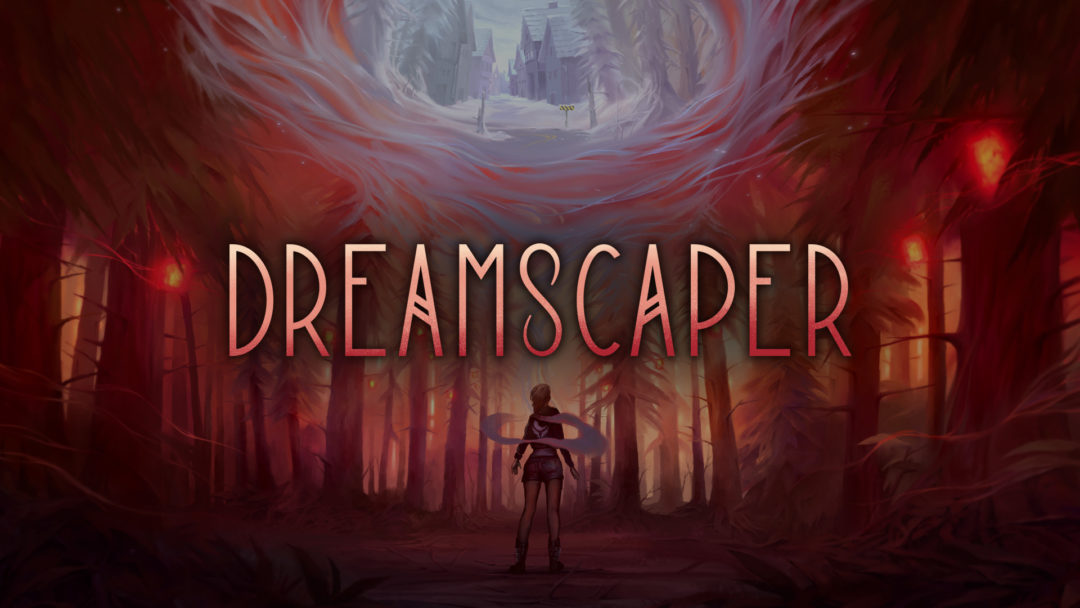When the founders of Afterburner Studios began working on their first game, they were looking for a way to marry the mechanics to the story. That goal led to Dreamscaper, a rogue-like hack-and-slash game where players control Cassidy, a woman battling depression in a surreal dreamworld.
“This idea of dreaming came because it felt like it fit with going back into your dreams over and over again,” said designer Ian Cofino. “Mental health and depression is just something that we felt was a rich area to explore in story that hasn’t been seen in many games. It’s something that in general is stigmatized, so it was a great way for us to look at an issue that has emotional weight and then bring it to the forefront for our title.”
The studio was founded last year by Cofino, Robert Taylor, and Paul Svoboda, who had previously worked together at the now defunct Outpost Games. Cofino and Taylor both said their time working at the venture capital-funded studio was highly educational, but for different reasons. Cofino learned how to take initiative, manage multiple projects at once, and share responsibility. Taylor said he learned about the perils of working with investors.
“Large amounts of money creates rather large expectations, so it’s always good to manage those expectations, which is one of the reasons why the idea of going self-funded and not taking on any big investment was really appealing to us,” he said. “We were able to have autonomy and control over our own destiny and to treat our customer well and make sure you build the product that they invested in.”
Afterburner Studios funded Dreamscaper through Kickstarter, earning more than double their $25,000 goal. Cofino said the process involved a lot of work leading up to and during the campaign, which ends today, but that it also helped his team build a fanbase ahead of the game’s planned release in the first quarter of 2020.
“It’s huge to have 500 people play the demo and then come back to us and confirm things that we think we’re doing well or tell us where we can improve on areas,” he said. “In the future, there may not be as many studios that are working in isolation and then just putting something out into the world. It seems like that’s a much more risky way of building a game. It’s a lot better to be transparent early on.”
The game has changed drastically since a pre-alpha launched months before the Kickstarter campaign based on player feedback, with the team adding more non-combat elements like puzzle rooms. But much of the game still has players use a wide variety of weapons to battle enemies influenced by Cassidy’s love of science fiction and fantasy, with mechanics inspired by Cofino’s passion for fighting games.
“We’re giving players lots of options, but simplifying things so that it’s easy to learn, hard to master,” he said. “We wanted to have layers of mastery so that someone who’s playing it 10 hours, 20 hours down the road still feels like they’re learning and improving as a player.”

While Dreamscaper’s six levels will only take about two hours to beat, the team hopes players will spend hundreds of hours in their procedurally generated world the way Taylor, the team’s engineer, put hundreds of hours into The Binding of Isaac. Taylor said he mirrored that game’s progression loop for level generation along with its economy, which makes players treat weapons, keys, and their character’s health as a resource. But they’ve also tweaked the formula, replacing The Binding of Isaac’s tedious backtracking with fast traveling and adding exchange rooms where players can more directly trade for the resources they need to use.
Cofino said he was also “totally shameless” in borrowing from Dead Cells with an upgrade system, where players are rewarded for their progress by unlocking new weapons they can find in the game.
“One of the things we set out to do from the beginning is create an accessible rougelike,” Cofino said. “That upgrade systems helps parcel out the game in manageable chunks. Players can kind of be fed through certain paths, which is kind of hard to do in a procedural game. Having that progression helps players learn the game and it also creates these great rewards.”
Svoboda, who handles the game’s environment and character design, said he was inspired by both impressionist paintings and the dark surrealist work of Polish artist Zdzisław Beksiński. The result is a style that looks a bit blurry and unfinished in the serene, beautiful landscapes of Cassidy’s dreams before getting nightmarish as she falls deeper into depression. While all of the members of the team said they relate to Cassidy and her struggles in some way, Svoboda said the character is a lot like his own sister.
“My sister is probably the person I look up to most and someone I tried to mirror a lot of my life after,” Svoboda said. “It felt very close to me personally.”

Cassidy starts the game feeling lonely, escaping from her insecurities into a world created by her vivid imagination. Then slowly, things happen in the world that bring her into a much darker place.
“I thought having each dream using the lighting and the color and the atmosphere to communicate her emotional state at that period in her life was a really powerful storytelling mode. It wouldn’t be too heavy-handed. It wouldn’t get tired on repetition. I just felt like it fit perfectly with the style of game.”
One of the most surreal qualities of Dreamscaper is that Cassidy, like the characters in Ashen, doesn’t have facial features. While Svoboda said he likes the mysterious style of that game, his decision was more practical than aesthetic.
“I’m not a character artist,” he said. “I don’t know how to model faces. A lot of our decisions come from how do we create a game with three people that is high-quality.”
“One of the nice things about indie gaming is we make a decision based upon scope and justify it later,” Cofino added. “It’s so mysterious!”
You can listen to a track from Dreamscaper’s eerie score from Dale North at this exclusive link.






Published: Sep 5, 2019 04:08 pm